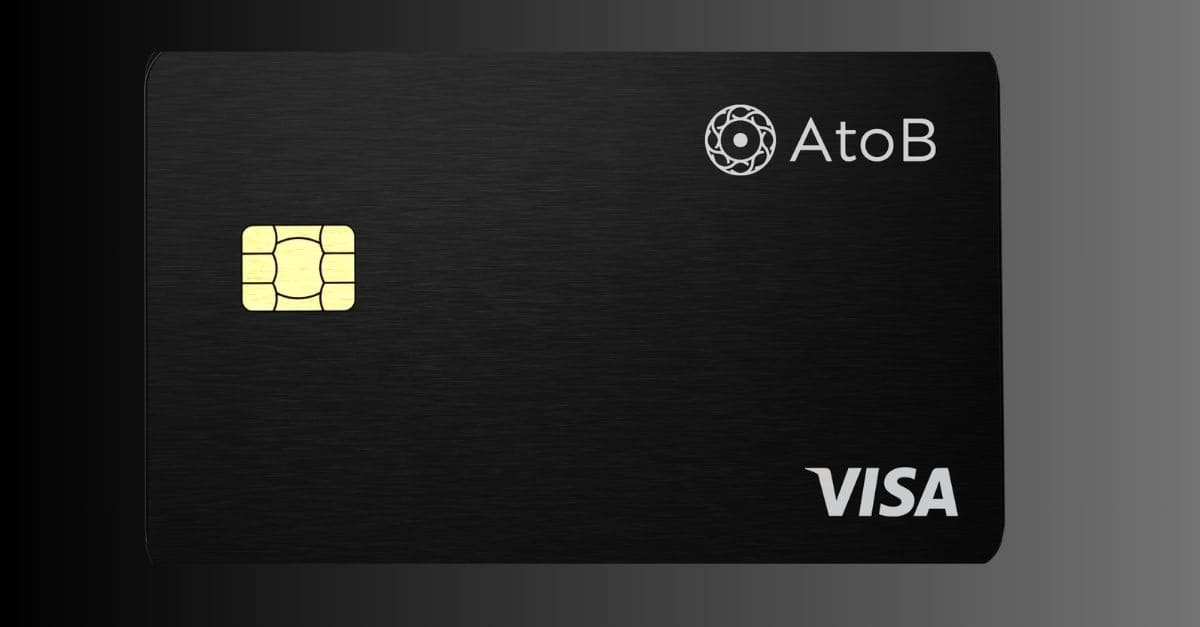
In today’s competitive credit card market, finding the perfect A to B credit card can be devastating. With so many options available, it’s crucial to understand what you need to know before deciding.
Whether you’re a regular traveller looking for a card that offers travel rewards or a responsible client searching for a low-interest card, we’ve got you covered. We’ll break down the key factors to consider when comparing credit cards, such as interest rates, annual fees, rewards programs, and more.
But it’s about more than just the technical features. We want to help you find a credit card that aligns with your lifestyle and values. Are you a foodie? We’ll highlight cards that offer dining perks. Do you enjoy concerts and events? We’ll point you toward cards that offer exclusive entertainment benefits.
By the end of this article, you’ll be equipped with the knowledge needed to make an informed decision when choosing the perfect A to B credit card. So, let’s get started on your journey towards financial freedom and rewards!
Understanding the A to B Credit Card Concept
A to B credit cards, or travel credit cards, are designed to provide users with rewards and benefits tailored to their travel needs. These cards typically offer generous sign-up bonuses, travel reward points, and perks such as airport lounge access, travel insurance, and concierge services. If you love to travel or frequently find yourself on the go, an A to B credit card could be the perfect fit for you.
When choosing an A to B credit card, it’s essential to understand the concept behind these cards. While they may seem similar to regular credit cards, A to B credit cards are specifically designed to cater to the needs of frequent travellers. They offer a range of benefits and rewards that can make your travel experiences more enjoyable and cost-effective. Whether looking for free flights, hotel stays, or upgrades, an A to B credit card can help you achieve your travel goals.
Benefits of A to B Credit Cards
- No Annual Fees: The A to B Business Gas Card is a cost-effective choice for businesses, as it is free with zero fees, helping companies save on unnecessary expenses.
- Generous Gas Discounts: Businesses can benefit from substantial discounts of up to 25 cents per gallon on gas purchases, significantly reducing fuel costs and contributing to overall savings.
- Net 7 Payment Terms: The net seven payment terms of A to B credit card require the card to be paid in full every seven days, promoting responsible spending and efficient business cash flow management.
- Universal Acceptance: The card can be conveniently used at any station that accepts Visa, providing flexibility and convenience for business travel and operations.
- Credit Building Opportunity: By reporting on-time payments to Experian Business every 30 days, the A to B card helps businesses build credit, contributing to their credit profile and financial credibility.
- Comprehensive Expense Coverage: Beyond gas purchases, the card can pay for insurance, maintenance, tolls, and more, offering extensive support for various business expenses.
- Transparent and Well-Funded Company: Founded in 2019 by Harshita Arora, Tushar Misra, and Vignan Velivela, AtoB has demonstrated transparency and stability. With total funding of $257 million from 5 funding rounds since August 2020, A to B showcases a solid financial foundation and potential for growth as a reliable economic partner for businesses.
Factors to Consider When Choosing an A to B Credit Card
When evaluating A to B credit cards, several key factors should be carefully considered to ensure that the chosen card aligns with your financial goals and lifestyle.
- Annual Fee: Consider whether the card charges an annual fee and whether the benefits provided outweigh this cost. Some A to B credit cards offer premium benefits that may justify a higher annual fee, while others provide valuable rewards without charging this fee.
- Rewards Structure: Assess the rewards structure of the A to B credit card, including the earn rate for points or miles, bonus categories, and redemption options. Look for a card that aligns with your spending habits and offers valuable rewards, such as travel rewards, cash back, or flexible points.
- Sign-Up Bonus: Many A to B credit cards offer sign-up bonuses, which can significantly boost your rewards balance. Evaluate each card’s sign-up bonus and consider how it fits into your rewards strategy.
- Interest Rates: Consider the annual percentage rate (APR) of the A to B credit card, especially if you anticipate carrying a balance from month to month. Low interest rates help minimize the cost of carrying debt on the card.
- Foreign Transaction Fees: For frequent travellers, examining whether the A to B credit card imposes foreign transaction fees is crucial. Cards with no foreign transaction fees are advantageous for international travel and can help save on currency conversion costs.
- Terms and Conditions: Carefully review the terms and conditions of the A to B credit card, paying attention to details such as grace periods, late payment fees, and penalties. Understanding these terms can help you avoid unnecessary costs and manage the card effectively.
Recommended Article: Where Can I Use My Goodyear Credit Card?
Tips for Maximizing the Benefits of Your A to B Credit Card
Once you’ve chosen the perfect A to B credit card for your needs, maximise the benefits the card offers. Here are some tips to help you make the most of your card:
- Understand the Rewards Program: Familiarize yourself with how the rewards program works, including how to earn and redeem rewards points. Take note of any expiration dates or restrictions that may apply.
- Use Your Card for All Travel-Related Expenses: To maximize your rewards, use your A to B credit card for all travel-related expenses, including flights, hotel stays, car rentals, and dining. This will help you earn more reward points, which can be redeemed for future travel expenses.
- Take Advantage of Promotional Offers: Watch for promotional and bonus rewards opportunities. Some A to B credit cards may offer additional reward points for specific spending categories or limited-time promotions. By taking advantage of these offers, you can earn even more rewards.
How do you apply for an A to B credit card?
Applying for an A to B credit card is a relatively straightforward process. Most credit card issuers allow you to apply online through their website. Before applying, ensure you meet the eligibility criteria, such as minimum income requirements and credit score thresholds. It’s also important to carefully review the terms and conditions of the card. Once you’ve gathered all the necessary information, you can proceed with the online application process. In some cases, you may receive an instant decision.
Requirement for application of A to B Card
To apply for an A to B credit card, you will need the following:
- EIN (Employer Identification Number)
- Driver’s license
- Proof of revenue from the past three months
Common Mistakes to Avoid When Choosing an A to B Card
When choosing an A to B credit card, avoiding common mistakes is essential. Here are some pitfalls to watch out for:
- Signing Up For a Card with High Annual Fees: Some A to B credit cards offer valuable benefits and rewards. They also may come with high annual fees. Evaluate whether the benefits outweigh the cost before committing to a card with a significant annual fee.
- Ignoring the Fine Print: Review the terms and conditions before applying for an A to B credit card. These terms include details of interest rates, fees, and rewards programs. Ignoring the fine print can lead to unexpected charges or limitations on the rewards you earn.
- Carrying a Balance And Accruing Interest: A to B credit cards often have higher interest rates than regular credit cards. To avoid unnecessary interest charges, pay your balance in full each month.
Alternatives to A to B Cards
While A to B credit cards are popular for frequent travellers, some may have better options. If you prefer to avoid being a frequent traveller, there are alternative options to consider. Some alternatives include:
- Cashback Credit Cards: Cashback credit cards offer a percentage of your purchases as cash rewards. These cards provide more flexibility in how you use your rewards. This can better fit those who prefer cash over travel rewards.
- General Rewards Credit Cards: General rewards credit cards offer rewards points that can be redeemed. These cards can be redeemed for various options, including travel, merchandise, or gift cards. These cards provide more flexibility when using your rewards. It also lets you choose the redemption option that best suits your needs.
Conclusion
The A to B credit card offers an attractive choice for taking advantage of travel rewards. Individuals must understand the features thoroughly. That will make this card stand out, including its reward system, annual fees, and policies on foreign transactions. Users can determine if it aligns with their financial objectives and personal lifestyle by comparing it with other credit cards and carefully assessing its unique benefits. Like any other financial tool, it is essential to thoroughly consider the terms and implications of the A to B credit card to ensure maximum benefits and a good fit for individual needs.
[flexible-faqs id=’2106′]






